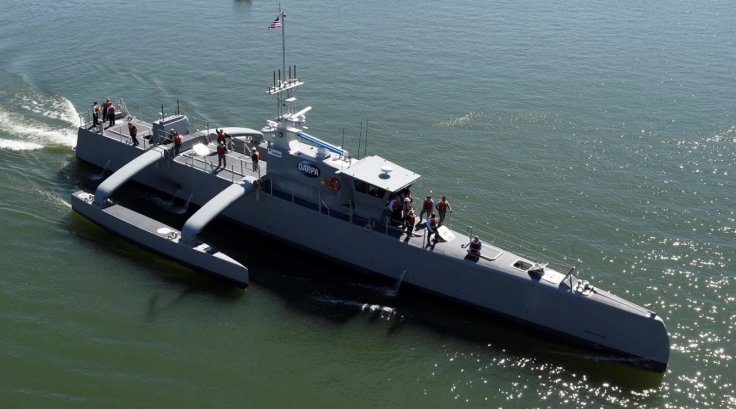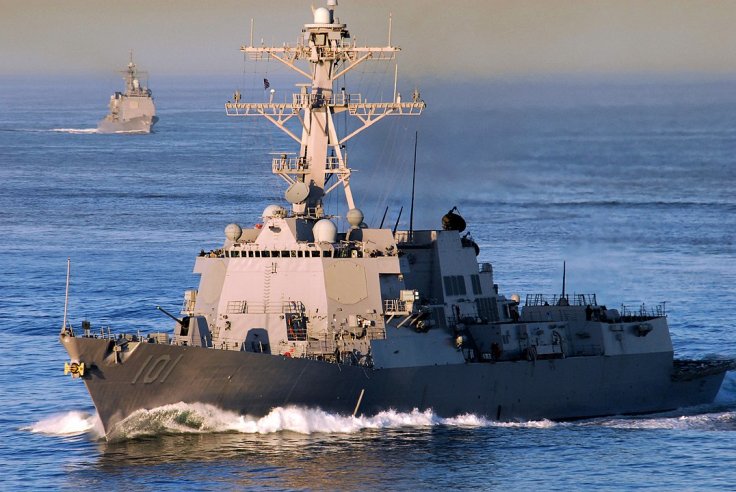Technology has always driven how a war is fought. But the future looks very different than what it is now. With automation, artificial intelligence, and machine learning, soldiers may not even be on the battlefields. Rather, they would be remotely operating unmanned tools of warfare. While the U.S. Army and the Airforce have partially adopted robotics and unmanned machinery, the U.S. Navy is close to procuring autonomous vessels that could be remotely operated.
Dubbed as Unmanned Surface Vessel (USV), it will provide the U.S. Navy with the option to send a boat in extremely hazardous three-D (dull, dirty, or dangerous) missions. The other area, it is going to help, is in reducing the cost. The biggest cost of building a ship revolves around putting a crew on board. But with unmanned vessels, they can eliminate that cost. It will also come with an option to put a crew in it. The sailors, meanwhile, will be only given with complex and executive tasks.

Autonomous Vessels
Unlike the U.S. Army and the Airforce, the Navy has been slow to adapt to automation in naval combat. Even then, unmanned aerial vehicles (UAVs) take a big chunk of the automation process. But with increasing tensions with China, especially in the South China Sea, the Navy believes it is time to procure USVs.
It could be small autonomous patrol boats, submarine hunters, combat submarines, or even small destroyer-type ships. Such USVs will need minimal human intervention. It can leave a port on its own, can be at sea for months, and then return for maintenance on its own.
LUSVs
However, the Navy is also interested in procuring Large Unmanned Surface Vessels (LUSVs). Recently, the Navy has given defense contractor Lockheed Martin the nod to test LUSVs. In a year-long study, Lockheed will test how to provide the Navy with LUSVs that can operate without a crew, can deliver payloads, and also be used in combats.
Part of the LUSV Detailed Design & Construction competition, Lockheed has partnered Vigor Works, a Portland, Oregon based ship manufacturer for that. Lockheed will be tasked with the management of the ships including system integration, weapons management, automation, platform integration, and cybernetic expertise, the company said in a statement.

The $7 million test contract will see Lockheed develop a naval ship based on commercial vessel design and can be modified for automation and cybersecurity systems, the New Atlas reported. Lockheed will leverage the automation experience from its platform-agnostic Sikorsky MATRIX technology that enables flying a helicopter using just a wireless tablet. It will also use AXIS control technology that the Navy is already using to manage engineering and machinery controls.
Challenges of Unmanned Ships
While there are obvious advantages of an autonomous ship that is combat-ready, there are more than a few challenges. Such ships remain at sea for more than six months at times and during this period, it needs constant preventive maintenance. It is not clear how the LUSVs will achieve that.
"If you think about a ship today, there are daily machinery rounds and constant preventative maintenance. The Navy has its casualty reporting system, and the commercial world has something very similar. And over six months, that's a lot of work that's not getting done on the autonomous ship," Matthew Collette, a Professor of naval architecture and marine engineering at the University of Michigan told Defense News.

The other problem is with full automation capabilities. The artificial intelligence technology is at a development phase and hasn't yet reached its pinnacle that can be adapted completely. Elon Musk has frequently boasted of such abilities for Tesla electric cars but we are yet to see a fully autonomous car that is capable of self-driving without any human intervention.
With a lot of sensors involved to carry out such fully autonomous tasks, it is difficult for unmanned ships to achieve a six-month deployment without maintenance with the current technology. If one sensor is damaged, it could put the whole mission in jeopardy.
"But the other approach is to try and monitor it and put in a lot of redundancy and figure out how we get this system reimagined so it can do a six-month deployment. And I can't really assess where we are with that at this point, I just don't have enough insight to know if that's six months away. Is it six years? Is it never reachable?" Collette questioned.









